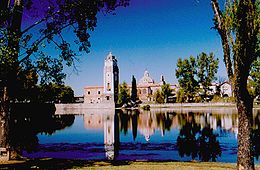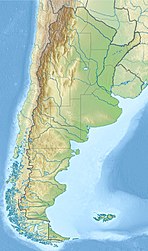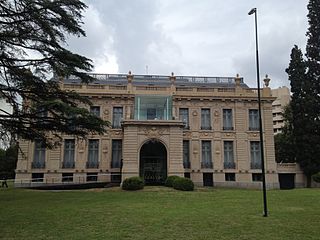
Córdoba is a city in central Argentina, in the foothills of the Sierras Chicas on the Suquía River, about 700 km (435 mi) northwest of Buenos Aires. It is the capital of Córdoba Province and the second-most populous city in Argentina after Buenos Aires, with about 1.6 million urban inhabitants according to the 2020 census.

Argentina has a vast territory and a variety of climates and microclimates ranging from tundra and polar in the south to the tropical climate in the north, through a vast expanse of temperate climate. Natural wonders include the Aconcagua, the highest mountain in the world outside the Himalayas, the widest river and estuary of the planet, the Iguazú Falls, the Humid Pampas, and the Argentine Sea. Visitors enjoy the culture, customs and Argentine cuisine.

The Jesuit missions among the Guaraní were a type of settlement for the Guaraní people in an area straddling the borders of present-day Argentina, Brazil and Paraguay. The missions were established by the Jesuit Order of the Catholic Church early in the 17th century and ended in the late 18th century after the expulsion of the Jesuit order from the Americas. The missions have been called an experiment in "socialist theocracy" or a rare example of "benign colonialism". Others have argued that "the Jesuits took away the Indians' freedom, forced them to radically change their lifestyle, physically abused them, and subjected them to disease".
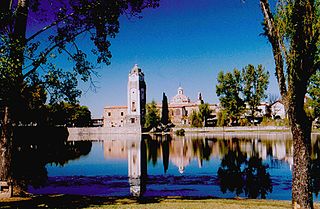
Alta Gracia is a city located in the north-centre of the province of Córdoba, Argentina. Its name means "High Grace". It is built upon the Sierras Chicas, in a region that the Comechingón Indians used to call Paravachasca. It has about 43,000 inhabitants.
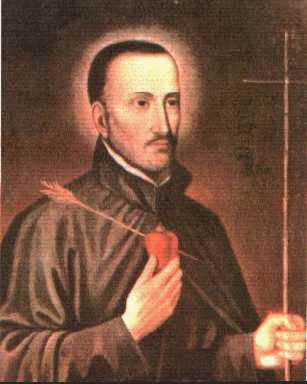
Roque González de Santa Cruz, SJ was a Guaraní-Spanish Jesuit priest who was the first missionary among the Guarani in Paraguay. He was murdered in 1628 and is venerated as a martyr and a saint by the Catholic Church.
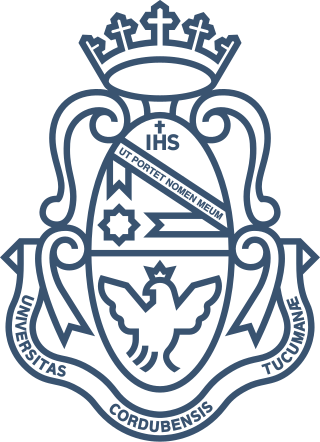
The National University of Córdoba, is a public university located in the city of Córdoba, Argentina. Founded in 1613, the university is the oldest in Argentina, the third oldest university of the Americas, with the first university being the National University of San Marcos and the second one, Saint Thomas Aquinas University.

The architecture of Argentina can be said to start at the beginning of the Spanish colonisation, though it was in the 18th century that the cities of the country reached their splendour. Cities like Córdoba, Salta, Mendoza, and also Buenos Aires conserved most their historical Spanish colonial architecture in spite of their urban growth.
Jesús María is a city in the province of Córdoba, Argentina, located 49 km due north from the provincial capital Córdoba, on National Route 9, within the valley of the Sierras Chicas. It has about 27,000 inhabitants as per the 2001 census [INDEC].
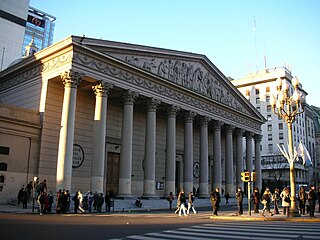
The Metropolitan Archdiocese of Buenos Aires is a Latin Church ecclesiastical territory or archdiocese of the Catholic Church in Argentina. It is a metropolitan archdiocese with 13 suffragan sees in the country, including two Eastern Catholic eparchies.

The Spanish missions in South America comprise a series of Jesuit Catholic religious outposts established by Spanish Catholics in order to spread the Christian doctrine among the local natives.

Santa María Department is a department of Córdoba Province in Argentina.

San Ignacio, also known as San Ignacio Guazú, is a district and city of the Misiones Department of Paraguay, located 225 kilometres (140 mi) from Asunción.
It is Misiones' most-populous and fastest growing city, with an estimated 35,497 residents in 2021. San Ignacio is known as the "Corazón del Sur" for being in the center of the three southern departments: Ñeembucú, Misiones and Itapúa.

San Ignacio Miní was one of the many missions founded in 1610 in Argentina, by the Jesuits in what the colonial Spaniards called the Province of Paraguay of the Americas during the Spanish colonial period. It is located near present-day San Ignacio valley, some 60 kilometers (37 mi) north of Posadas, Misiones Province, Argentina. In 1984, it was one of four reducciones in Argentina to be designated by UNESCO as World Heritage Sites.

The Jesuit Missions of Chiquitos are located in the Santa Cruz department in eastern Bolivia. Six of these former missions collectively were designated as a UNESCO World Heritage Site in 1990. Distinguished by a unique fusion of European and Amerindian cultural influences, the missions were founded as reductions or reducciones de indios by Jesuits in the 17th and 18th centuries to convert local tribes to Christianity.

Colegio Nacional de Monserrat is a public college preparatory high school in Córdoba, Argentina. Patterned after the European gymnasium, the school is the second oldest of its type and one of the most prestigious in Argentina.
Franz Jalics was a Hungarian-born Jesuit priest and author of books on Christian spirituality.
Events from the year 2013 in Argentina
The Colegio Máximo de San José is a Jesuit religious college in San Miguel, Buenos Aires, Argentina. Pope Francis studied there during his youth.
